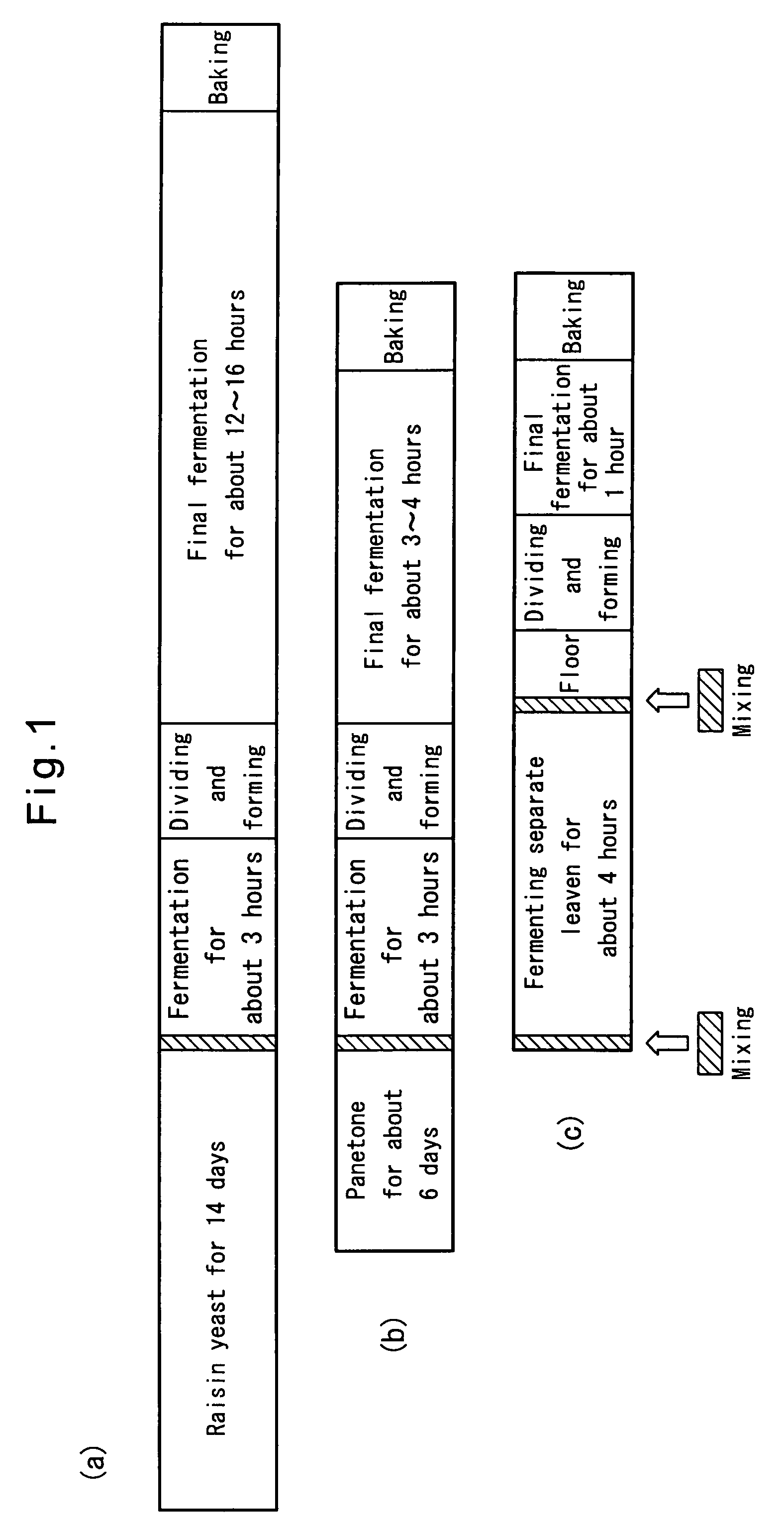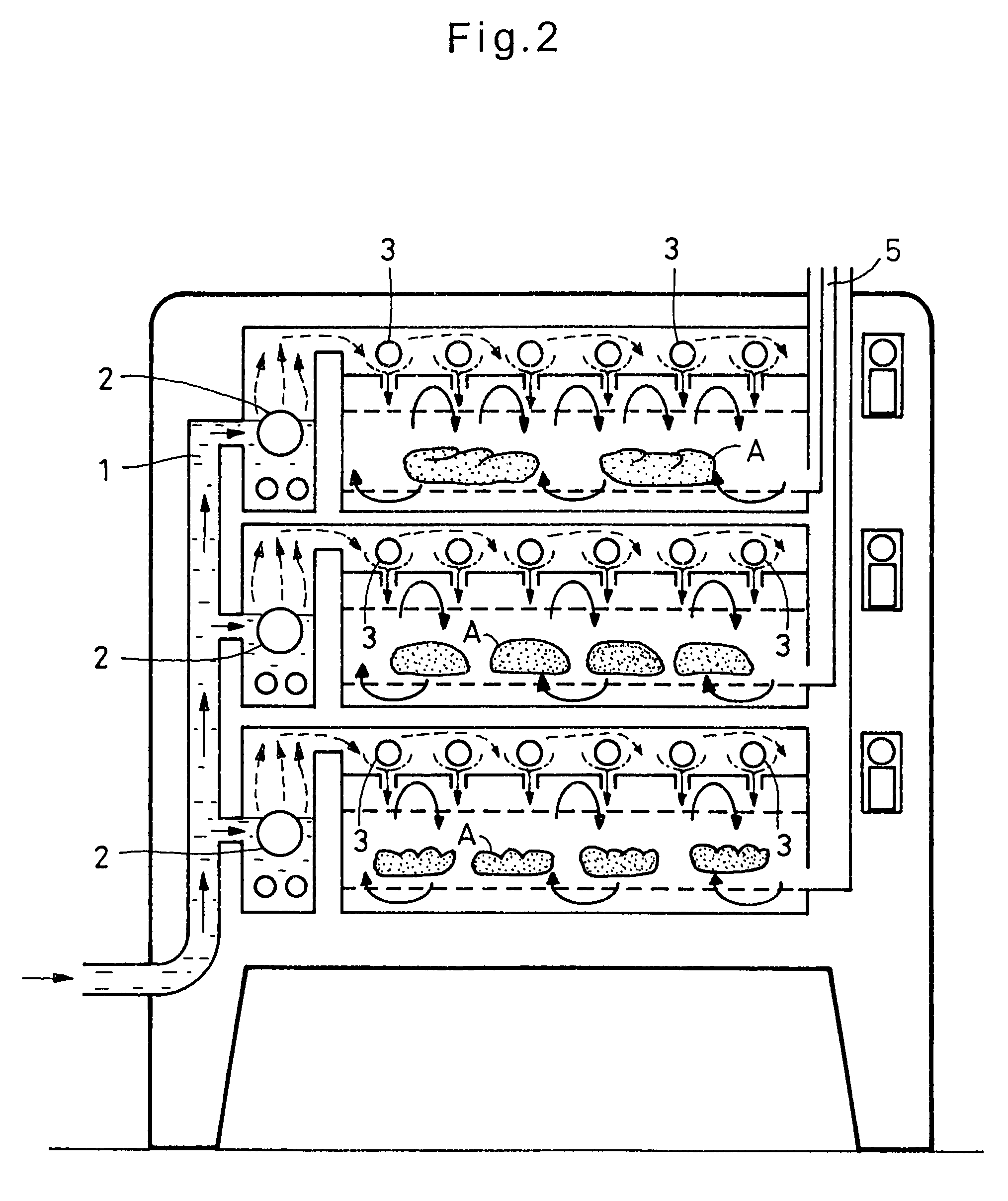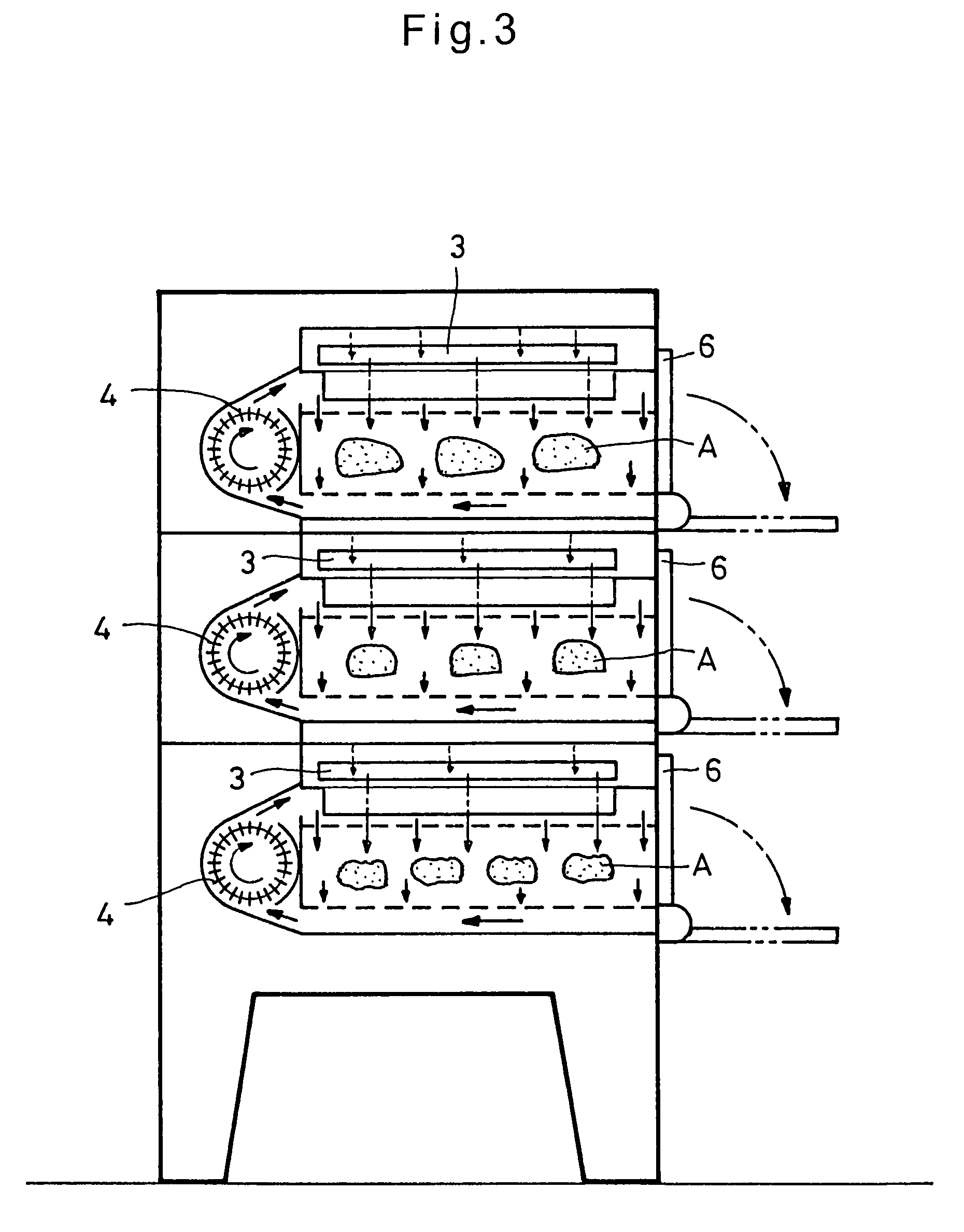Method for producing bread
a technology for bread and dough, applied in the field of bread production, can solve the problems of difficult to impart ripe flavor to the whole dough, difficult to sufficiently improve the taste of bread, and difficult to achieve the effect of sufficiently improving the taste of bread
- Summary
- Abstract
- Description
- Claims
- Application Information
AI Technical Summary
Benefits of technology
Problems solved by technology
Method used
Image
Examples
example 1 to 4
of the Invention
[0069]Bread doughs having the compositions shown in Table 1 were prepared by a straight method using yeast according to the method of the first embodiment. The doughs were fermented, divided, formed and fermented following ordinary bread making steps under the conditions shown in Table 2.
[0070]
TABLE 1MaterialContent (parts by weight)Flour100.0Yeast1.8Malt0.3Salt2.0Fat2.0Sucrose1.0Water67.0
[0071]
TABLE 2StepsConditionsMixing6 min. at low speed2 min. at high speedKneading24° C.Fermenting2 hours at 28° C. with humidity 75%, 1 hour afterdegassingDividing350 gBench time25 min.Forming550 mmFermenting70 min. at 33° C. with humidity 75%Before bakingCuts are formed on surfaceBaking33 min. at 240° C. with steam(Partial baking: 30 min.)
[0072]Then, for Reference Examples 1 and 2, the doughs were completely baked in an ordinary electric oven. The doughs of Examples 1 and 2 of the invention were partially baked (by about 80%). The doughs of Example 1 of the invention and Reference ...
example 3
of the Invention
[0079]To 1 kg of flour, 21 g of salt, 10 g of fat, 10 g of sucrose, 560 g of water and about 250 g of ripe raisin yeast on day 15 which was obtained by the method of the invention were added, the mixture was fermented at 28° C. for 4 hours, the mixture was divided into a plurality of pieces each weighing 100 g, the divided pieces were formed into the shape of rod-shaped French bread (casse-croûte), and fermented at a low temperature for a long period of time. That is, the divided pieces were initially fermented at 21 to 24° C. for one hour, then at a lower temperature of 5 to 6° C. for 10 hours, and finally at 21 to 24° C. for 3 hours.
[0080]The bread dough was then partially baked by about 80% at 230° C. for 18 minutes in an ordinary bakery oven, naturally cooled, and frozen at −20° C. for 72 hours. The frozen dough was then thawed by leaving it at room temperature for one hour, rebaked at 210 or 250° C. as shown in Table 1, and stored at room temperature for a prede...
PUM
 Login to View More
Login to View More Abstract
Description
Claims
Application Information
 Login to View More
Login to View More - R&D
- Intellectual Property
- Life Sciences
- Materials
- Tech Scout
- Unparalleled Data Quality
- Higher Quality Content
- 60% Fewer Hallucinations
Browse by: Latest US Patents, China's latest patents, Technical Efficacy Thesaurus, Application Domain, Technology Topic, Popular Technical Reports.
© 2025 PatSnap. All rights reserved.Legal|Privacy policy|Modern Slavery Act Transparency Statement|Sitemap|About US| Contact US: help@patsnap.com



